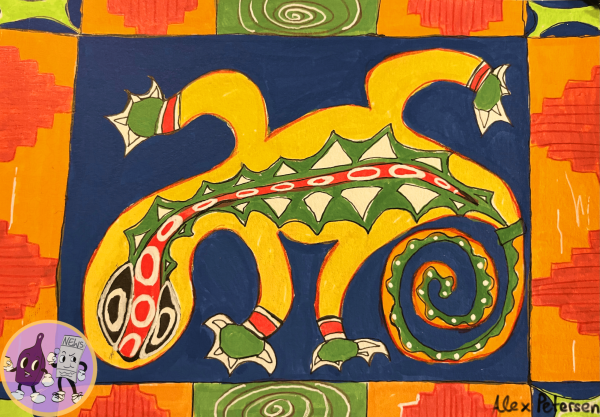THE PSYCHOLOGY BEHIND MARKETING
How companies use psychology based tactics in their advertising
Image by rawpixel.com on Freepik
People putting puzzle pieces of a human head together.
Have you ever wondered why you bought something? Maybe it was a late night purchase of a kitchen utensil you just had to have, or possibly a new pair of shoes that were one of three left in stock. Well, it’s likely that the advertising for said products convinced you to purchase them by using psychology.
People have been buying and selling items for thousands of years, and through all of that customers have always needed something to entice themselves to spend money. Although we may not have started advertising with psychology in mind, it is certainly used today. There are thousands of different ways for marketers to do this, it just takes knowing what facet of psychology to apply to make a product appealing. Here are three of the most common tactics used in marketing:
#1 Reciprocity:
The strategy used here is the idea that when someone receives a gift they will automatically want to return the favor. It’s a give and take response (Crobox). Different businesses can employ reciprocity by offering free items to their customers. An example of this could be receiving a mint with your check in a restaurant. Or as the Chicago School of Psychology states, Hulu, a popular digital streaming platform, uses reciprocity by offering users a free trial before committing to a monthly fee. The point of this is to get consumers to enjoy using the service and then feel the need to start paying for it, because they used the free trial.
#2 Scarcity:
When an item appears to be running out quickly it makes it look more desirable, this is scarcity. Companies will emphasize in advertising that an item is offered for a limited time only or that there are only a couple items left in stock. This convinces the consumer to purchase the product because it is in demand. Additionally humans are competitive by nature, so it makes sense that people would want to beat others to a coveted item, that’s why this tactic is used so often.
However, marketing companies need to be careful with how this trick is applied. If it appears that there were only a few items to begin with, as opposed to being sold quickly, the effect of scarcity decreases greatly (HubSpot).
#3 Anchoring:
Anchoring is using the power of comparison, specifically with the price of items. Crobox explains that, “Anchoring is the cognitive bias that influences how we view a product by comparing it to something else.” If a product is on sale and its original price is clearly in view consumers can juxtapose it with the sale price making them feel like they are getting a good deal. If handled with care, marketers will intentionally place the original price of the item, or the anchor, next to the discount price (HubSpot).
There are many different tactics like these three that marketers use daily, but there are also other ways psychology is used in marketing. One worth noting is the use of Maslow’s hierarchy of needs. In the 1940’s Abraham Maslow suggested a theory that humans function based on a hierarchy of needs. This is represented in the shape of a pyramid, and the thought is that once someone’s needs are met for one level they move up to the next. The levels from top to bottom are as follows: physiological, safety, love and belonging, esteem, and self actualization. All needs of a human being theoretically fall under a category in the pyramid. Advertising companies have found ways to align their product with a level of the hierarchy and target it in their advertisements. This is more effective for some products than others.
For instance the first two portions of the pyramid physiological and safety don’t apply to a wide variety of items. Physiological needs really only apply to companies that sell water and food products, not a lot more fits under that category (BAI). As for safety, this is the perfect level for insurance and car companies to focus on. In those industries safety is a huge selling point, so it makes sense for that part of the hierarchy to be used. It’s definitely more likely someone will buy a car if it’s known for its safety features, as opposed to a car that will easily lead to danger. All of this considered, that’s just about the limit of companies that can effectively use those sections of the pyramid.
Anywhere you look psychology
is being used in marketing,
from your car to the discount
sweater you bought.
The third level of Maslow’s hierarchy, love and belonging, is the most broad category when it comes to advertising. “Once people have insurance, a safe car and a secure home, their attention turns to this area” (BAI). This is where the market opens up to products involving love and relationships. So, a jewelry company could use this in their advertisements, and focus on the love between two people and how to use jewelry to express that (BAI). A daycare center could show care between a parent and child by picking their “top quality” facility, effectively using love and belonging. Or as BAI notes this section can be used to make a consumer feel as if they are a part of something special, like Coca-Cola did with their buy the world a coke campaign.
The next segment is where items peter-off from being real needs and more luxury purchases, it’s esteem needs. If a company is trying to sell a product that is admittedly more expensive than others, but has the appeal of being luxurious, they would use this level. The point is that if a consumer has their basic needs met they may want to expand into purchasing items that boost their status. For example a purse from Walmart may function just as well as one from Gucci, but the lavishness and heightened esteem that comes from having the more expensive bag convinces the consumer to splurge.
Self-actualization is at the top of the hierarchy. This is where the most untraditional types of marketing are done. Self-actualization is when people begin examining themselves and decide they want to fulfill their own potential. Some companies could target this by attempting to get people to better themselves and the world, so charity organizations might cover this level.
Anywhere you look psychology is being used in marketing, from your car to the discount sweater you bought. Whether or not that is ethical is up for debate, but it’s unlikely that companies will stop any time soon.

"I think it pisses God off when you walk by the color purple in a field somewhere and don't notice it" (Alice Walker).








